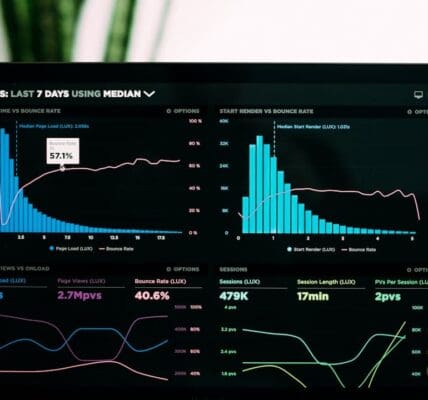In the dynamic landscape of digital marketing, the concept of ‘Q5’ is gaining traction among marketers looking to leverage opportunities that extend beyond the traditional four quarters of the fiscal year. Meta, a leader in digital advertising, has recently shared valuable insights regarding the marketing potential within this fifth quarter, which often encompasses the holiday season and the ramp-up to the New Year. This article explores what ‘Q5’ entails, its significance for e-commerce and retail, and effective strategies to capitalize on this period.
Understanding ‘Q5’ Marketing
‘Q5’ refers to the unique marketing landscape characterized by the festive shopping season that typically runs from late November through early January. During this time, varying consumer behaviors emerge, driven by holiday shopping, gift-giving, and post-holiday sales. Meta’s research indicates that consumers become more receptive to advertisements during this period, highlighting the effectiveness of targeted marketing campaigns.
Given the sheer volume of online transactions that occur in this timeframe, it becomes crucial for brands to optimize their digital presence. According to Adobe Analytics, U.S. online sales during the 2022 holiday season reached $211.7 billion, up 3.5% year-over-year. This statistic underscores the potential that ‘Q5’ presents for e-commerce and retail brands.
Capitalizing on Holiday Shopping Trends
To profit from the ‘Q5’ surge effectively, retailers need to tailor their marketing strategies to resonate with consumers. Here are several key tactics:
#
1. Personalization
Personalization is no longer a nice-to-have in e-commerce; it is essential. Consumers expect tailored experiences that cater to their preferences. For example, utilizing data analytics to segment customers based on purchase behavior can facilitate personalized email campaigns, website experiences, and targeted ads. Notably, a study by Epsilon suggests that 80% of consumers are more likely to make a purchase when brands offer personalized experiences. This insight is particularly relevant during ‘Q5,’ where consumers are bombarded with choices and distractions.
#
2. Tailored Promotions and Discounts
The holiday season is synonymous with sales and promotions. To attract buyers, brands should leverage time-limited offers, bundle deals, and exclusive discounts. Segmented email marketing campaigns can effectively communicate these promotions to specific groups. Such tactics not only enhance short-term sales but can foster long-term customer loyalty. Consider Target’s ‘Circle Offers,’ which provide targeted discounts based on a customer’s shopping history and preferences, leading to increased sales conversions during the holiday rush.
#
3. Social Media Engagement
Social media platforms play a pivotal role in how consumers discover, evaluate, and purchase products during ‘Q5.’ Meta’s own platforms—Facebook and Instagram—provide powerful tools to engage with shoppers. Utilizing dynamic ads, eye-catching visuals, and influencer partnerships can help brands build excitement around their products. For example, a collaborative campaign featuring a popular influencer can increase brand visibility and drive online traffic significantly.
A report from Sprout Social indicates that 68% of consumers engage with brands on social media, often using these platforms for product discovery. By posting regularly, creating interactive content, and collaborating during this festive season, retailers can boost their relevance and reach.
#
4. User-Generated Content (UGC)
User-generated content is an effective way to amplify a brand’s message and authenticity during ‘Q5.’ Encouraging customers to share their experiences and reviews concerning gift purchases or holiday recipes using your products can generate social proof. Brands can incentivize UGC through contests or features on their social media platforms. Evidence shows that 79% of people say user-generated content highly impacts their purchasing decisions.
#
5. Optimize for Mobile
The rise of mobile commerce cannot be overlooked, especially during the holiday season. According to Statista, approximately 55% of online purchases made in 2022 were conducted via mobile devices. Brands should ensure their websites are optimized for mobile, offering a seamless buying experience. Fast-loading pages, easy navigation, and mobile-friendly checkout processes are critical elements that can ultimately enhance conversion rates.
Building Post-Holiday Relationships
While ‘Q5’ focuses primarily on maximizing sales during the holiday period, brands should also think carefully about how they maintain relationships with customers post-holiday. Sending out thank-you emails, sharing exclusive sneak peeks of upcoming products, or implementing loyalty programs can keep consumers engaged long after the festive season. Engaging customers in a meaningful manner can lead to repeat purchases, especially if they have had a pleasant shopping experience.
Conclusion
The shift towards recognizing ‘Q5’ as a significant marketing opportunity signifies a crucial evolution in retail strategy. Brands that effectively harness data-driven insights to personalize their outreach, engage consumers through social media, and maintain post-sale relationships are more likely to reap the rewards. As this dynamic market evolves, retailers must stay ahead of trends and adapt their strategies to maximize the potential of this pivotal time of year.












